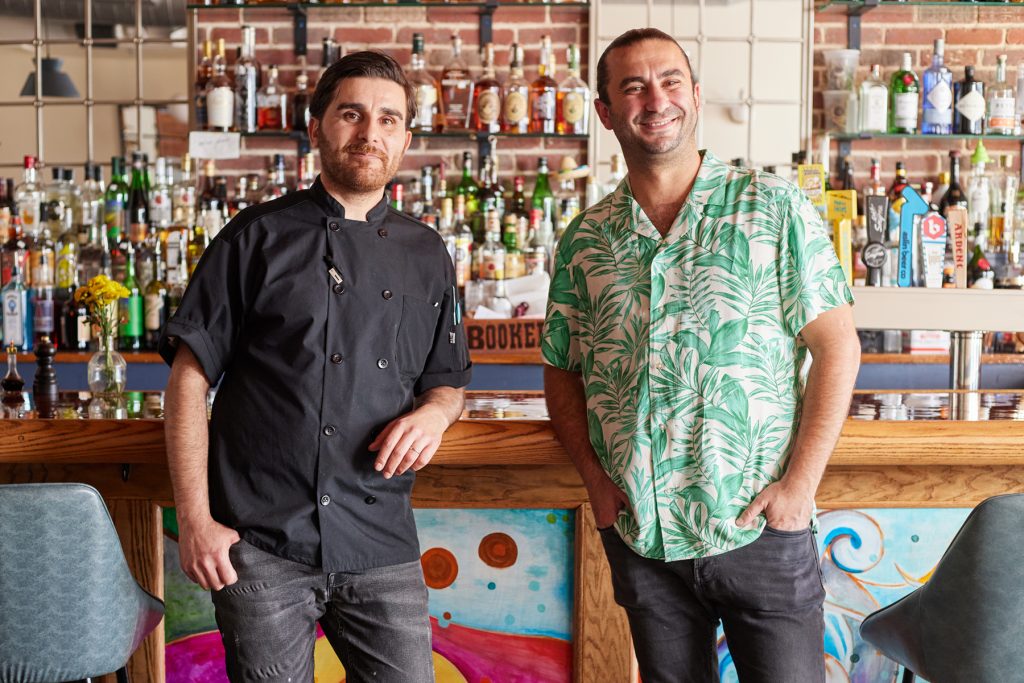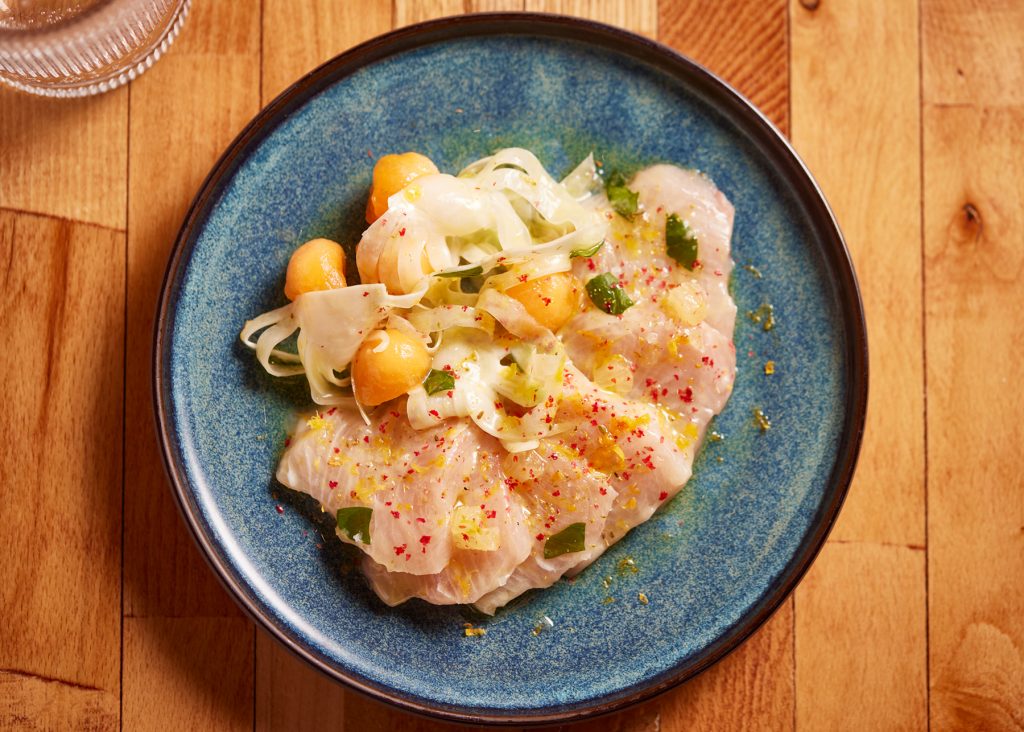Orhun Dikmen moved to Charlottesville to work in the kind of restaurant most people think of when they think Turkish food. But after six years with his brother at Sultan Kebab, he teamed up with chef Tarik Sengul to take his home country’s cooking to another level at Smyrna.
With its blend of Turkish and Aegean cuisine, Smyrna has attracted tons of attention since opening on West Main last summer. How? “It’s all about technique,” Sengul says. “I take the techniques I learned from working in New York and the spices and memories from Turkey. It is the combination of those that makes our food what it is.”

Sengul’s technique is hard won. He’s worked under some of the best chefs in the country, including Tom Colicchio and Joël Robuchon (before his death in 2018). Roasting, braising, grilling—Sengul learned it all in the French and new American traditions while working on hot and cold lines over several years.
But technique for Sengul also means the way he’s been taught to care for food from the moment it comes into his restaurant. For vegetables, it might simply be proper cleaning and storing. For protein, it might mean sourcing a full side of beef, breaking it down, and using every piece of the animal to its full potential. “Most restaurants get specific cuts,” Sengul says. “When you do the butchering in-house, you have the chance to have the bones and you can make the stock and the jus.”
Sengul’s cooking also features Japanese and other Asian influences. He describes a sort of east-meets-west distinction between the unique Aegean style and typical Mediterranean food.
Take Smyrna’s octopus dish. The charred protein is accompanied by bok choy and potato, but what elevates it is a sauce known as salgam. With a base of fermented purple carrot, the distinctly Aegean sauce takes the well-known Mediterranean staple in a new direction. “There are certain things we have to keep on the menu to call it Aegean food, like the octopus and the calamari,” Sengul says.

Ingredients are also critical for Sengul and Smyrna. Virginia offers plentiful farms with fresh produce and beef, which have given rise to Smyrna’s nontraditional burger and rib-eye preparations, but Mediterranean seafood is trickier. In the raki-balik, a fish crudo with fennel-infused compressed melon and a Meyer lemon vinaigrette, Sengul conceived the dish around fluke. But because the fish is difficult to obtain at sushi-grade, he’s transitioned to hamachi, commonly known as yellow tail in the States.
Other Smyrna menu items have a surprisingly familiar feel. Sourdough bread, for example, is extremely common all over Turkey, Sengul says, but “maybe they advertise it better in France and Italy.” The burger, ground in-house, and rib-eye steak preparations both get Sengul’s careful attention to technical detail—the latter garnished with delicate gem lettuce and crispy pommes dauphine and finished with that homemade jus—despite not being Aegean dishes per se.
“Beef is not common in Turkey, but I live in Virginia,” Sengul says.

According to the classically trained chef, the two beef dishes are probably the trickiest Smyrna serves. They’re simple constructions, so they both come down to executing the techniques Sengul learned in Colicchio and Robuchon’s restaurants.
After about eight months of service, Sengul says Smyrna is only just finding its groove. It’s been tough to retain service industry staff post-COVID, and he’s still working to train everyone to his standards and have them working from the same culinary philosophy.
“This will evolve—with seasonality, but it also depends on the team,” Sengul says. “As our cooks get more comfortable, we may have some more experimental dishes … more playful and fun dishes. We are conservative at the moment.”
